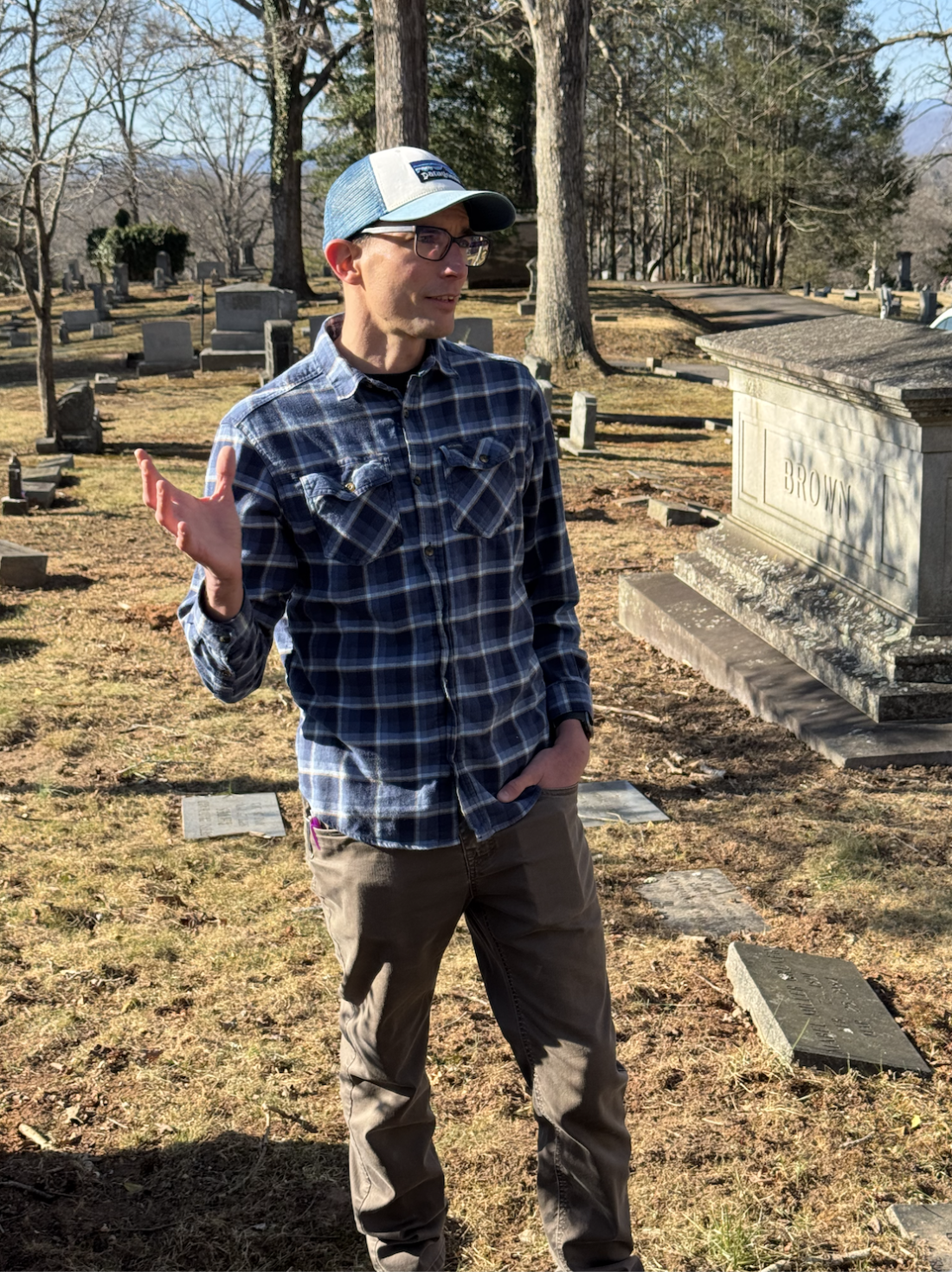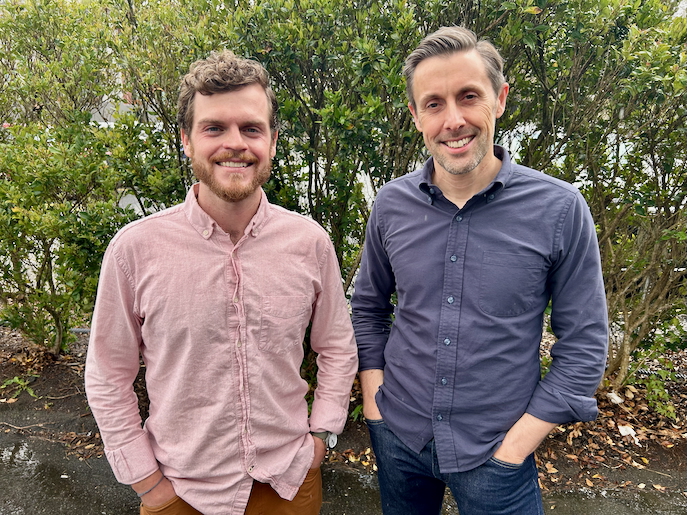Six months later, the effects of Tropical Storm Helene in Western North Carolina linger, even underground. When 53 trees fell in the City of Asheville’s 87-acre Riverside Cemetery, dozens of gravesites were endangered when dirt and roots that had intermingled with coffins were ripped out of the ground.
In an effort to suggest how debris-removal contractors could gently remove the remaining stumps and root balls, archaeology students from Western Carolina University (WCU) spent the week of March 10 — their spring break — studying and uncovering graves near tree falls.
“They have friends who are probably at Myrtle Beach right now, and they’re out here working and having this chance to apply skills they’re learning in the classroom in a very practical way,” says Ben Steere, head of the department of anthropology and sociology at WCU.

None of the final resting places of the 140-year-old cemetery’s most famous residents, from Thomas Wolfe to Zebulon Vance, were damaged in the storm, says Jonathan Neary, interim cemetery manager. However, about 40 of the graveyard’s more than 14,000 burial sites were disrupted, triggering the need for a careful review.
AshBritt, a debris removal contractor funded by the Federal Emergency Management Agency (FEMA), swept through the cemetery removing limbs and large tree trunks, leaving stumps and root balls near gravesites, says Jes Foster, Asheville’s solid waste manager. FEMA’s Environmental Historic Preservation Division requires the city to perform a study to ensure “sensitive historic matters are preserved.”
That’s where about 10 students and three professors — two archaeologists and an anthropologist — came in.
Steere said FEMA called WCU’s chancellor’s office in January to ask if they could help. Initially, he was a little concerned about what the scale would be but decided it could be accomplished in a week and enthusiastically signed on.
The team jumped in, carefully uncovering headstones that had been buried by debris and picking through root balls to ensure they did not displace any human remains. The spent a week at the cemetery and will submit recommendations to the city for how it should complete debris removal at each gravesite.
Disaster archaeology
Students were applying cultural resource management archaeology, a common career goal for aspiring archaeologists, says Steere. This form of archaeology ensures that important cultural sites are not disturbed whenever there is digging — such as before a school is built or a sewer line is installed. But it’s not often that a cemetery is unearthed.

Thus, the project at Riverside represented an opportunity for students to apply archaeology to real life, Steere notes. “In this case, the practical problem is what is the safest, best way to remove these stumps, these big tree falls, without disturbing any more graves and burials that are present?”
Tree roots tend to grow toward ground that is disturbed, in this case to bury a casket.
“Once you’ve dug a hole, that tends to make a kind of reservoir for moisture. You disturb that soil moisture, and the trees are like, ‘Hey, there’s a source of moisture,’” says Brett Riggs, Sequoyah distinguished professor of Cherokee studies at WCU.
Then, if roots have grown underneath and around a coffin when the tree falls, its roots — and whatever they are wrapped around — are pulled to the surface.
Riggs noted March 11 while meeting with Xpress that while some graves had collapsed from the weight of trees on top of them, there didn’t appear to be much root-caused damage to graves.
“There are relatively few graves, given the sort of the scope of destruction, that are very directly affected by holes right next to them. In terms of [remains that were] rooted out, we’re finding that it’s a better situation than we thought,” he noted.
The team also researched long-deceased families to ensure there weren’t any unmarked graves disturbed.
Students sifted through cemetery records and searched for eulogies online to determine exactly how many children would have been buried in a family plot, for example. They found one eulogy from 1937 on findagrave.com that showed a mother had five children who died at a young age, indicating that there were likely five children buried with her at Riverside, Riggs notes.

What happens next
Once the WCU team completes its recommendations, representatives from FEMA and AshBritt will determine which sites will require special attention from a professional archaeologist, Foster says.
“When they come out to this location, they’re going to have a kind of ready-made set of recommendations, photographs, things they can use. It’ll help inform them of the best way to remove [the remaining debris],” Steere says.
Meanwhile, Riverside Cemetery remains closed to the public, and it’s unclear when it will reopen, says D. Tyrell McGirt, Asheville parks and recreation director.
In addition to the about 30 burials each year, Riverside acts as a frequently used park, Neary says. Ghost and history tours also are frequent users of the cemetery during warmer months.
Only private sales are being processed, as the city is not selling any new plots, Neary notes. The city can still accommodate burials, even during debris cleanup. There have been eight since the storm, McGirt says.






